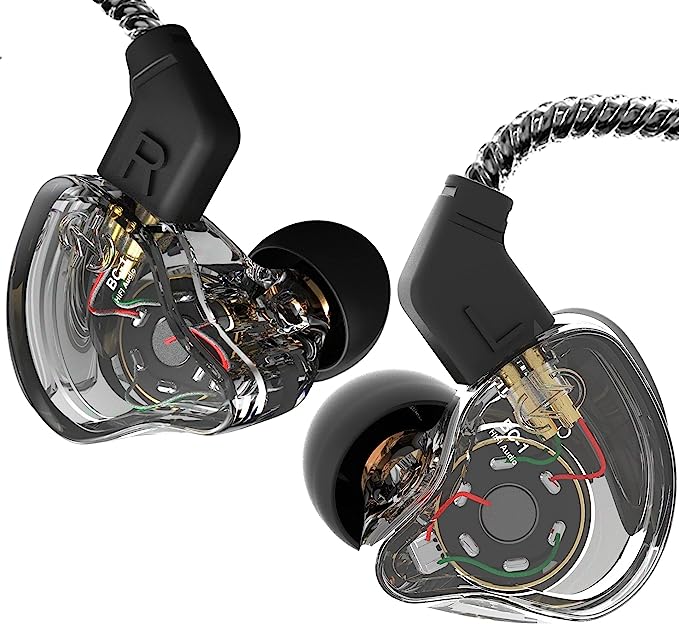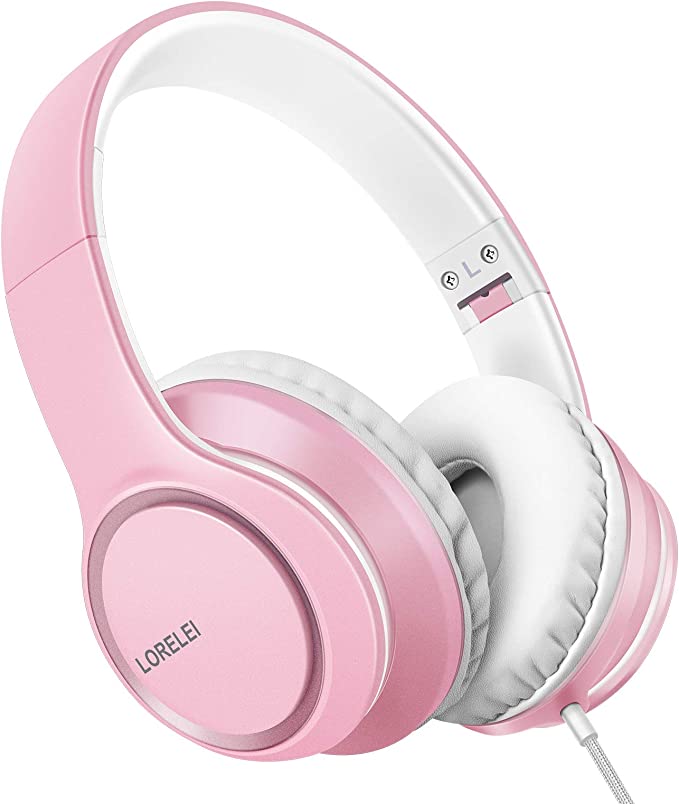The desire to give voice to our emotions through song is a thread woven deep into the human tapestry. From ancient communal chants to the vibrant glow of a modern karaoke lounge, music and shared performance have an almost primal power to connect us, uplift us, and allow us a unique form of expression. Karaoke, born in Japan in the 1970s, rapidly transcended its origins, evolving from niche club entertainment into a global phenomenon. Today, technology has untethered this joyful pursuit from fixed locations, bringing sophisticated sound and vast song libraries into our homes, backyards, and even on the road. The Ikarao Shell S2 Portable Karaoke Machine for Adults is one such modern conduit, a compact system promising an all-in-one entertainment experience. But beyond the surface-level features, what science, design philosophies, and user considerations truly define a device like this? Let’s explore.

Decoding the Decibels: The Science Behind the Shell S2’s Sonic Heart
At the core of any audio device lies its ability to move air and, in doing so, move us. The Shell S2 is described as possessing a 140-watt peak power output, channeled through dual 2.7-inch full-range speakers. Now, “peak power” in audio engineering refers to the maximum power an amplifier can deliver for very short durations, accommodating sudden musical crescendos or impactful bass notes. While it’s a common marketing metric, it’s distinct from RMS (Root Mean Square) power, which indicates a more sustained, average power output. For a portable system, a healthy peak power suggests an ability to deliver energetic sound without immediate, obvious strain, contributing to what we perceive as a lively and dynamic performance, crucial for the often-bombastic backing tracks of karaoke.
The choice of “full-range” speakers is significant in a compact design. Unlike multi-way speaker systems that use separate drivers (woofers, tweeters, midranges) for different frequency bands, a full-range driver aims to reproduce the entire audible spectrum, from low bass to high treble, with a single cone. This simplifies design and saves space, but presents its own engineering challenges: a small cone must work incredibly hard to produce satisfying bass while simultaneously rendering delicate high frequencies. Modern driver materials and design advancements have made remarkable strides in improving the performance of such compact units.
Further enhancing the raw output is what Ikarao terms “PRO Sound 3.0,” which, according to the product details, incorporates Digital Signal Processing (DSP) chips and “smart crossover technology.” DSP is essentially a powerful, miniaturized computer dedicated to manipulating audio signals in real time. Think of it as an invisible, tireless sound engineer living inside the machine. Its tasks can include:
- Equalization (EQ): Sculpting the frequency response to compensate for speaker limitations or to achieve a desired sound profile – perhaps boosting clarity in the vocal range or adding warmth to the mids.
- Echo Cancellation & Noise Reduction: Crucial for karaoke, where a microphone is used in proximity to speakers. DSP algorithms can identify and suppress unwanted echoes and background noise, leading to a cleaner vocal output.
- Dynamic Range Control: Preventing sudden loud passages from distorting and boosting quieter ones to ensure everything is audible.
The “smart crossover technology,” in the context of full-range drivers, likely refers to sophisticated DSP algorithms that optimize the performance across the entire frequency spectrum that the single driver type is handling, rather than a traditional crossover that splits frequencies between different types of drivers.
And then there’s the “Bass Boost” button – a feature many listeners enjoy. This typically employs DSP to amplify lower frequencies. The psychoacoustic effect is a perception of deeper, more impactful bass, which can make music feel more substantial and engaging, especially from smaller speaker enclosures where deep bass reproduction is inherently challenging.

Spotlight on Vocals: The Art and Science of the Wireless Microphone System
Karaoke is, fundamentally, about the voice. The Shell S2 comes equipped with two wireless microphones, which the manufacturer states are self-charging when docked into the main unit – a thoughtful touch for convenience and readiness. These microphones are described as having a “super-cardioid pickup pattern.” This technical term refers to the microphone’s directionality, or its sensitivity to sound arriving from different angles.
Imagine a beam of light emanating from the front of the microphone; this is roughly where it’s most sensitive. A super-cardioid pattern is even more focused than a standard cardioid (heart-shaped) pattern, offering enhanced rejection of sound from the sides and, importantly, from the rear. For a karaoke scenario, this is scientifically advantageous. It means the microphone primarily “hears” the singer directly in front of it, minimizing the pickup of ambient room noise, chatter, or sound bleeding from the main speakers. This significantly reduces the likelihood of feedback – that unwelcome, high-pitched squeal that occurs when a microphone picks up its own amplified sound from a speaker and re-amplifies it in a runaway loop.
The wireless nature of these microphones, specified as Bluetooth, offers performers the freedom to move, gesture, and truly own their performance without being physically tethered. While professional stage systems often use UHF radio frequencies for wireless transmission due to their robustness and range, Bluetooth has become increasingly capable for consumer audio, offering a good balance of quality, power efficiency, and ease of pairing for applications like this. A key consideration for singing is latency – the delay between speaking into the mic and hearing the sound from the speakers. Excessive latency can be disorienting. Modern Bluetooth implementations strive to minimize this, though it remains a factor designers contend with.
The system also boasts eight sound effects and EQ adjustments for the microphones. The EQ allows singers to tailor their vocal sound – perhaps adding a touch of brightness or reducing boominess. The sound effects, also powered by the DSP, offer a range of alterations, from reverbs that simulate singing in a large hall to more novel effects, adding a layer of playful creativity to the experience.
The Smart Core: Lyrics, Libraries, and Limitless Connections
The modern karaoke machine is often a smart device, and the Shell S2 integrates several features that underscore this. A prominent feature is its built-in lyrics display screen. This is a significant step towards an all-in-one solution, reducing the need to connect and configure external tablets or smartphones just to see the words. The ease of use this offers can be a major draw, especially for less tech-savvy users or spontaneous singalongs.
This integration is powered by an underlying operating system that supports karaoke applications and, crucially, Wi-Fi connectivity. Wi-Fi opens the door to a vast universe of online song libraries. The product details mention a 6-month subscription to KaraFun, a service which reportedly offers access to over 50,000 songs. This shift from physical media (like CD+G discs of yore) to streaming services mirrors the broader evolution of music consumption, offering immense choice and instant access.
For those who prefer a grander lyrical display, or wish to include a larger audience in the singalong, an HDMI (High-Definition Multimedia Interface) output allows connection to a television. HDMI is the de facto standard for transmitting uncompressed digital video and audio, ensuring that the lyrics and any accompanying visuals are sharp and clear on a larger screen.
Beyond its karaoke-specific functions, the Shell S2 also embraces versatility through Bluetooth streaming, allowing it to function as a standard portable speaker for playing music from phones, tablets, or laptops. A suite of physical connection options, including Type-C (often used for modern charging and data), USB (potentially for playing media from flash drives or connecting peripherals), OTG (On-The-Go, allowing the device to act as a host for other USB devices), and AUX inputs/outputs, further enhances its flexibility, catering to a wide range of audio sources and output needs.
Engineered for Everywhere: The Science and Design of True Portability
The “portable” in its name is a key aspect of the Shell S2’s identity. With dimensions of 5.51 \\times 9.65 \\times 5.91 inches and a weight of 7.13 pounds, it’s designed to be transportable. An aluminum alloy handle is integrated for carrying, and the unit is described as having a “premium fabric finish,” which can offer a pleasant tactile feel and a degree of resilience, while also potentially having acoustic benefits by minimizing unwanted vibrations from the casing itself.
Central to its untethered operation is a rechargeable Lithium-Ion battery, which the manufacturer claims can deliver up to 8 hours of playtime. Lithium-ion technology has revolutionized portable electronics due to its high energy density – it can store a significant amount of energy in a relatively small and lightweight package compared to older battery chemistries like Nickel-Cadmium or Nickel-Metal Hydride. These batteries also generally have a good lifespan (number of charge-discharge cycles) and a lower self-discharge rate, meaning they hold their charge better when not in use. Of course, actual playtime will always depend on factors like volume level, screen brightness, and wireless usage, but an 8-hour claim suggests enough stamina for a typical party or gathering.
Beyond the Box: The Human Element in a Technological World
While we can dissect the technical specifications and scientific principles, the true measure of a device like the Ikarao Shell S2 lies in the experiences it enables. The provided product information, including user sentiments, paints a picture of this machine being used in diverse scenarios: lively home parties, family gatherings where different generations connect over shared songs, outdoor events like camping or picnics, and even by individuals for street performances.
There’s an undeniable social alchemy that happens when people sing together, regardless of skill level. It’s a vulnerable, joyful, and often hilarious act that breaks down barriers and fosters connection. The technology within the Shell S2 – the clear sound, the accessible lyrics, the easy-to-use microphones – serves as a facilitator for these moments. It’s about more than just circuits and speakers; it’s about creating a space where people feel comfortable enough to express themselves, to laugh, and to create shared memories. The act of singing itself has been shown to release endorphins, reduce stress, and improve mood. A well-designed karaoke system, therefore, becomes an instrument not just for music, but for well-being and social bonding.

Coda: The Future of Fun, Unplugged and On-Demand
The Ikarao Shell S2 Portable Karaoke Machine stands as an example of a broader trend in consumer electronics: the increasing sophistication, integration, and portability of entertainment technology. It encapsulates how advancements in audio processing, wireless communication, battery life, and display technology are converging to create devices that offer rich, multi-faceted experiences in compact, go-anywhere forms.
As we move forward, we can anticipate personal entertainment devices becoming even more intelligent, more seamlessly connected, and more attuned to individual and group preferences. But at the heart of it all, especially for something as communal as karaoke, the goal remains timeless: to amplify joy, foster connection, and give everyone a chance to be the star, even if just for a song. The true success of any such technology lies in its ability to fade into the background, effortlessly facilitating the human experiences it was designed to enhance.



